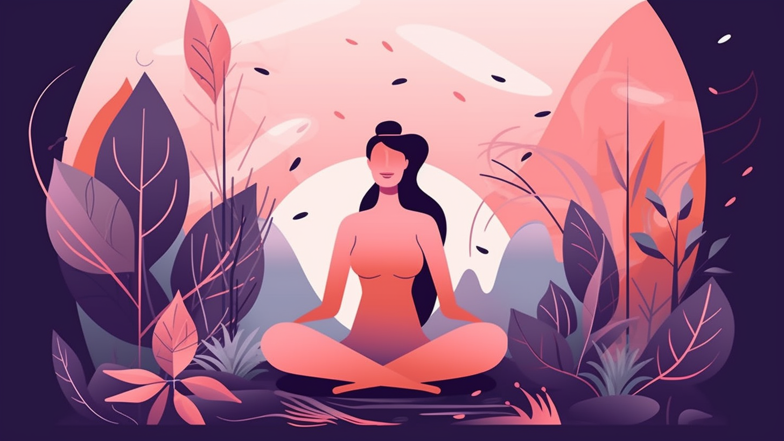
Deep Breathing
One of the easiest and most effective ways to reduce stress and calm your mind is through deep breathing. This technique involves taking slow, deep breaths in a controlled manner. You can do this anywhere, at any time, and in any position. The idea is to focus your attention on your breath and let all other thoughts and distractions fade away.
To Start, sit with a straight back and put one hand on your belly and the other on your chest. Breathe deeply through your nose and allow your belly to expand as you inhale. Hold your breath for a few seconds and then slowly exhale through your mouth, letting your belly sink in. Repeat this process for five to ten minutes until you start to feel more relaxed. You can also try this technique lying down and listening to calming music for added relaxation.
Meditation
Meditation is another effective technique that helps to calm the mind and reduce stress. It involves focusing your attention on a particular object, thought, or activity, with the aim of achieving mental clarity and emotional calmness.
To meditate, find a quiet place where you won’t be disturbed, sit in a comfortable position, and close your eyes. Start by taking deep breaths and focus your mind on your breath. As thoughts arise, identify them, acknowledge them, and let them pass without getting entangled in them. Keep returning your focus to your breath until you achieve a relaxed and focused state of mind.
You can start with five minutes a day and gradually increase the duration as you get more comfortable with the practice. Some people find it helpful to use guided meditations or meditation apps that offer a variety of meditations for different moods and needs.
Yoga
Yoga is another mind-body relaxation technique that offers a wealth of health benefits. It involves gentle stretches and poses that help to release tension from the body, calm the mind, and improve overall wellbeing.
Yoga can be practiced by people of all ages and fitness levels, and you can tailor your practice to your individual needs. Some forms of yoga, such as Yin and Restorative, are particularly helpful for relaxation and stress relief as they involve holding poses for extended periods, allowing the body to fully relax and release tension.
To get started with yoga, you can join a local class or try an online yoga program that offers beginner-friendly instructions and modifications. Begin with simple poses that focus on stretching the major muscle groups and gradually progress to more challenging poses as you gain strength and flexibility.
Visualization
Visualization is a powerful technique that involves using your imagination to create a mental image or scenario that promotes relaxation and positivity. Visualization can help reduce stress, improve mood, and boost confidence and performance.
To practice visualization, find a quiet and comfortable place to sit or lie down and close your eyes. Imagine a peaceful and serene location, such as a beach, a forest, or a mountain, and use all your senses to bring the scene to life. See the colors and shapes, hear the sounds, feel the temperature and textures, and smell the scents.
You can also practice visualization techniques that involve visualizing positive outcomes for specific situations, such as exams, job interviews, or public speaking. Visualize yourself succeeding and feeling confident and empowered in these scenarios.
Massage
Massage is another technique that promotes mind-body relaxation and wellbeing. Massage involves applying pressure and kneading the muscles of the body to promote relaxation, reduce tension, and increase circulation.
There are various types of massages, including Swedish, deep tissue, sports, and Thai massage, and each has its unique benefits. You can also experience the relaxation benefits of massage through self-massage techniques, such as using a foam roller or a massage ball to release tension in specific areas of the body.
Massage can be enjoyed in a spa or massage center or practiced at home with the help of oils, lotions, and tools.
Conclusion
Mind-body relaxation techniques offer a range of benefits for physical and mental health and can be easily integrated into your daily routine. Whether it is deep breathing, meditation, yoga, visualization, or massage, each of these practices has the potential to calm your mind, reduce stress, and promote relaxation.
By making relaxation a priority, you can improve your quality of life, boost your mood, and increase your ability to handle stress and challenges. So challenge yourself to try out one of these techniques today and take the first step towards a happier and healthier life.
Comments
Post a Comment